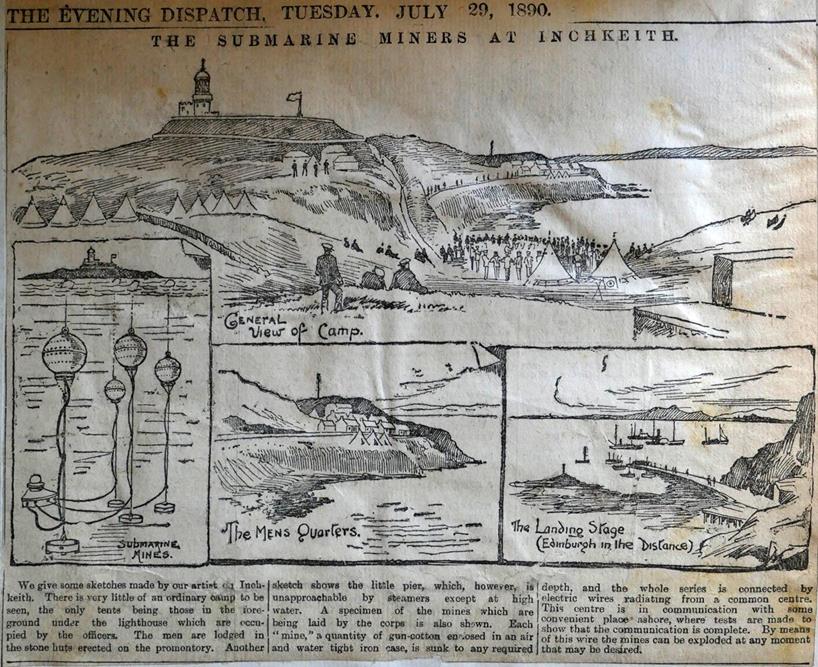
Defences of the River Forth
cromwell to
In Britain, the Government conducted experiments into the potential of electrically-controlled mines to defend harbours, and by 1870 the Submarine Mining Division of the Royal Engineers was created. Their mission was to be able to deploy defensive minefields in time of war across the mouths of the main Royal Navy harbours of The Medway, Portsmouth, Plymouth, Pembroke and Cork.
1880 – the British Government decided to extend the protection of defensive minefields to “commercially important estuaries” – the Humber, Clyde, Tay and the Forth. In 1887 A Submarine Mining Volunteer Division was raised in Edinburgh. They set up practice camps on Inchkeith.

Back in the Forth, in 1898 the Submarine Mining operation moved to a newly built permanent site at Port Laing in North Queensferry.
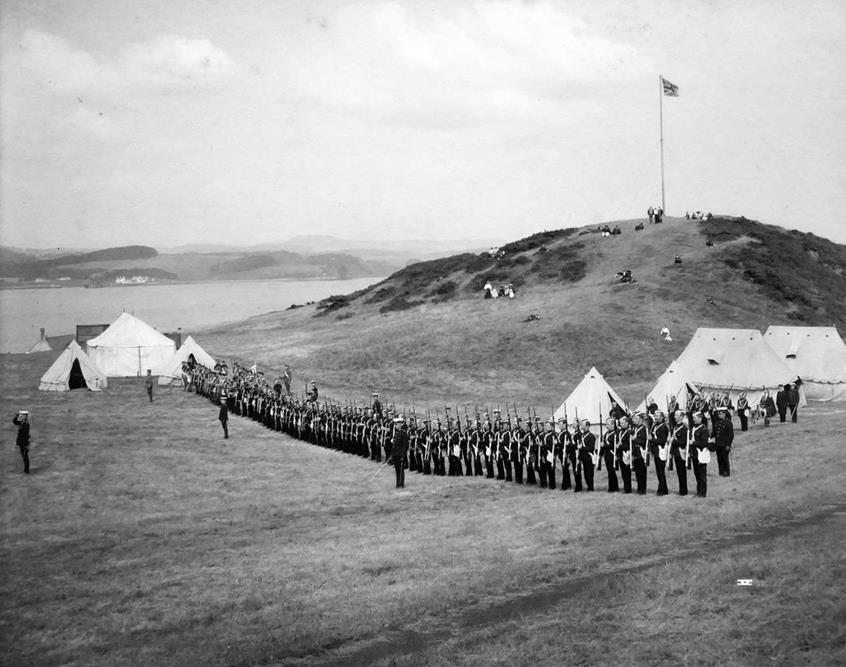

In 1902 heavy gun batteries were installed at Carlingnose on the north and Dalmeny on the south to back-up the minefield. . .
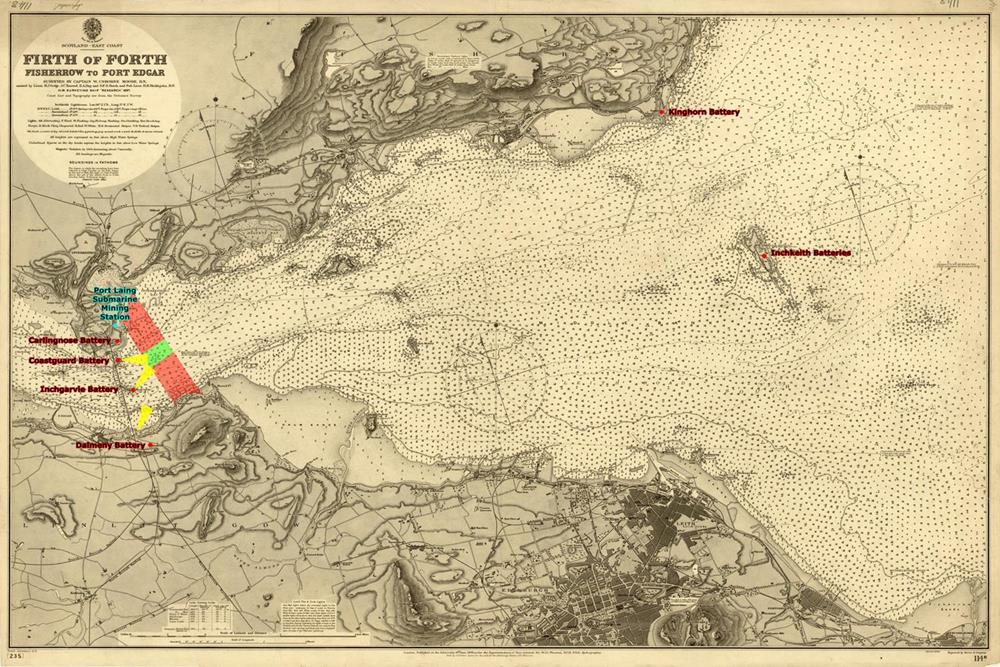
. . . and the first British submarine was launched.
By 1903 the threat from a new German Navy in the North Sea had been recognized, and that traditional navy bases Plymouth, Portsmouth, Chatham were all along the English Channel. A new set of East Coast naval bases was ordered – Scapa Flow, Invergordon, Rosyth, Harwich. Land was purchased for Rosyth, but it would be many years before the base was complete.
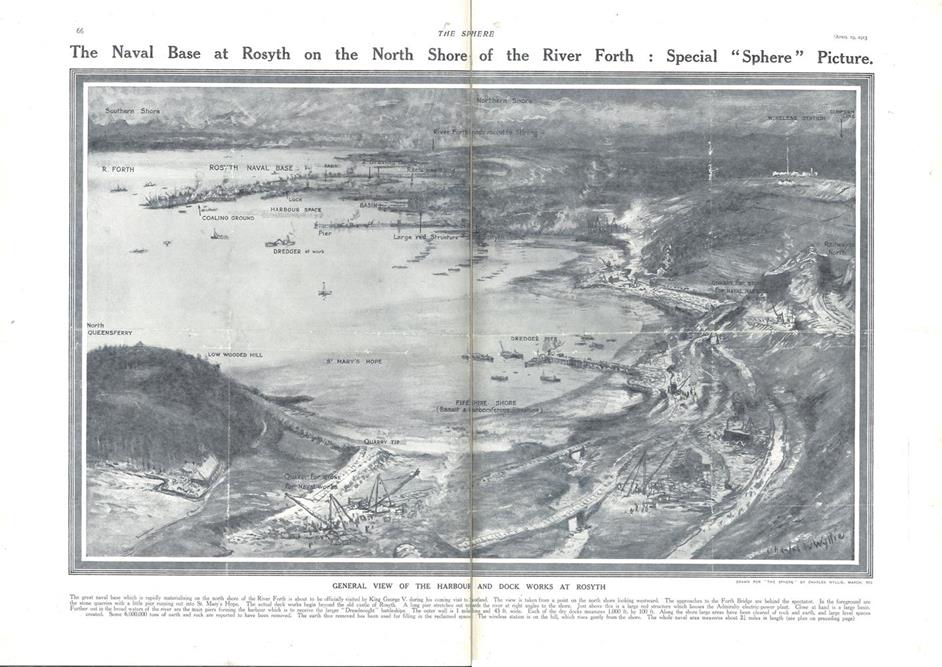
In 1906 the Submarine Mining service was disbanded. The concept had been rendered obsolete by the submarine, which could sail through the “friendly channel” and wreak havoc upstream. The volunteers became the precursors to the Territorial Army.
1912 – Work was proceeding on the new Dockyard at Rosyth. The caissons for the dockyard gates were constructed at North Queensferry and floated upstream to Rosyth
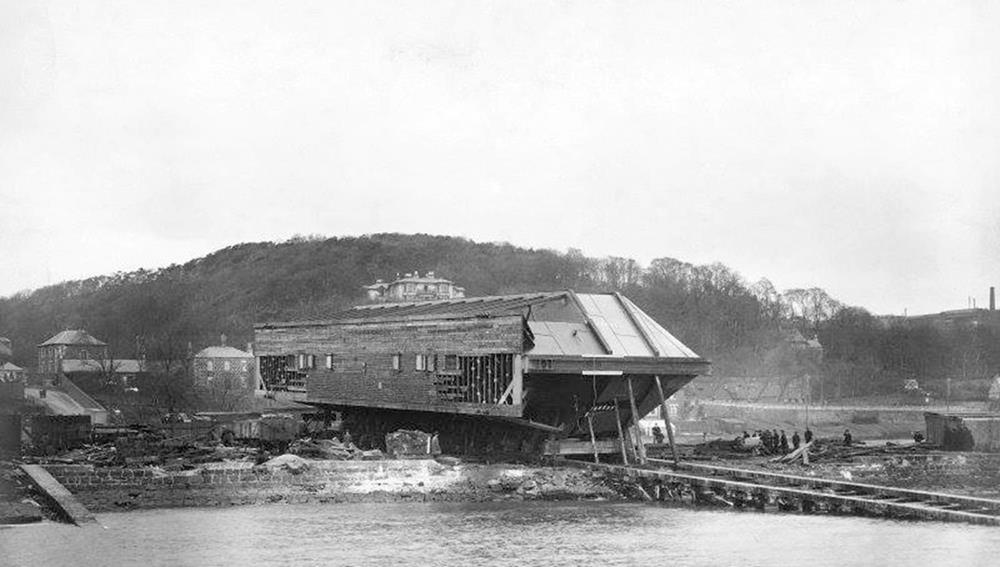
1912 – the Royal Flying Corps was established, with a Military and a Naval Wing. The Government announced the creation of a series of Air Stations, associated with the new east Coast Naval bases. The first naval air station in Scotland was at Port Laing, just along from the old Submarine Mining Station.
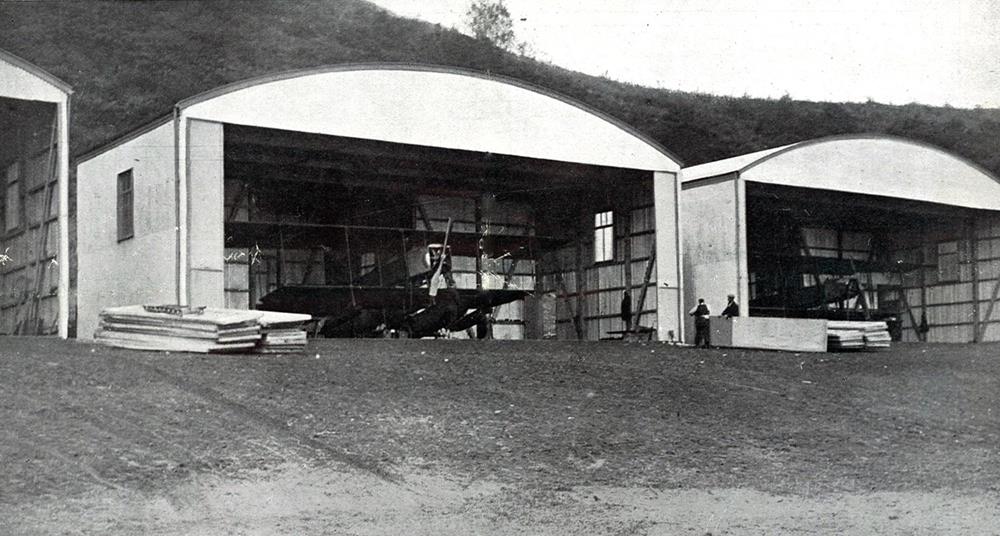


Their mission was to spot submarines underwater, by observing the wake and eddies left by their passage. They were based at Port Laing until January 1914, when they moved to Dundee. The combination of winds around the cliffs, and the sticky sand were not ideal at Port Laing. The owner of the land tried to put up the rent! And the MP for Dundee, was very keen on ships and planes – one Winston Spencer Churchill. They were at Dundee until war broke out.
28th July 1914 – World War broke out.
The Forth Defenses had been significantly upgraded with layers of submarine nets and new gun batteries to protect the base at Rosyth and the Grand Fleet in the Forth.
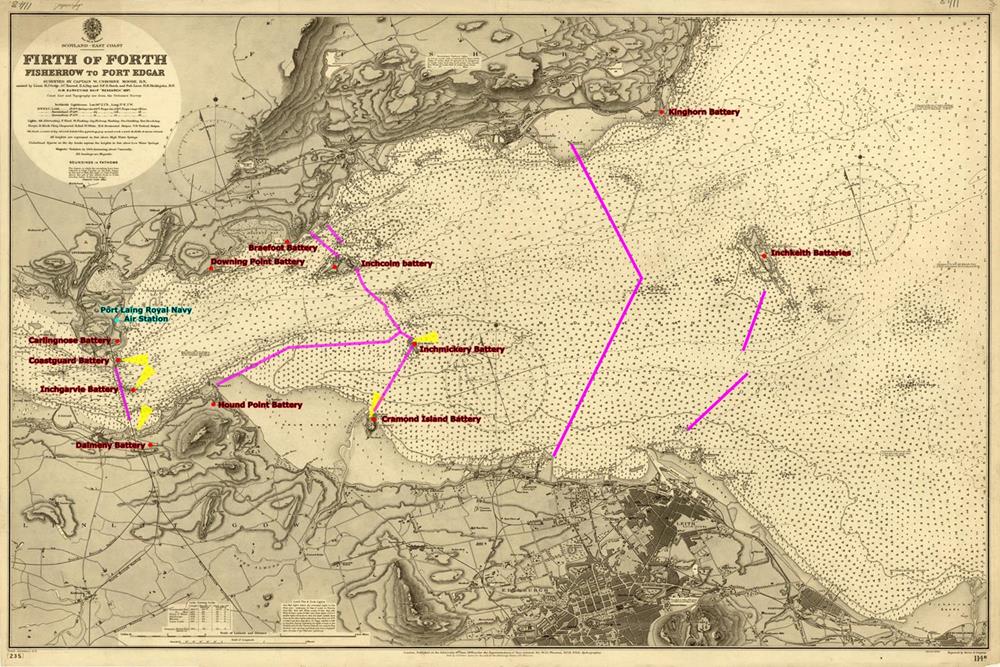
In the Forth, Port Edgar had been purchased as a destroyer base to complement Rosyth. The wounded from Jutland were landed here and treated at Butlaw hospital South Queensferry. The dead were buried in the local cemetery.
At North Queensferry, a Kite Balloon Station was opened in the summer of 1917. Both Beatty and Jellicoe recognized the value of kite balloons, which carried an observer high above a ship, in sighting an enemy.
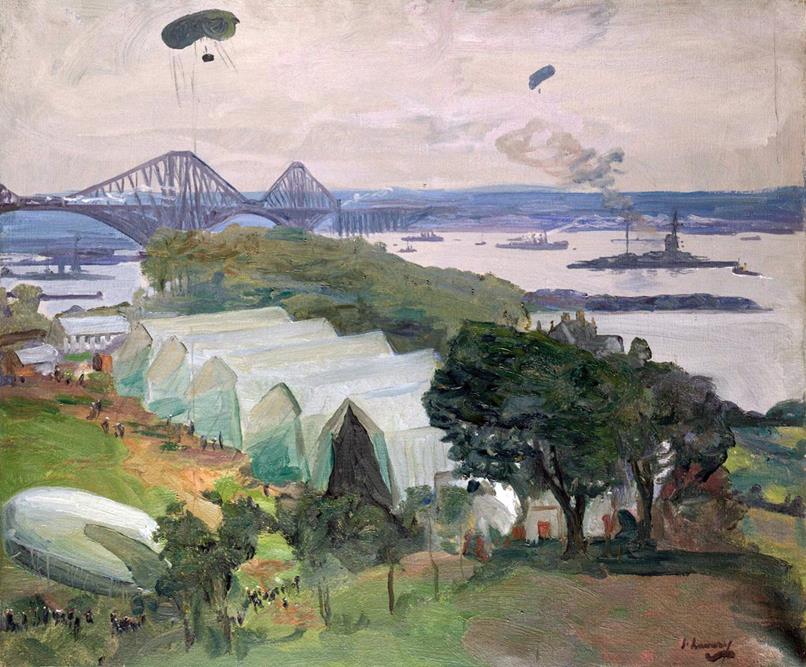
The Forth Defenses were revised again, to allow ships to anchor to the East of the Forth Bridge. The entire Grand Fleet – Battleships, Battle-cruisers and Destroyers could now be accommodated in the Forth. Jellicoe had retired, and Beatty now had the entire fleet under his command.
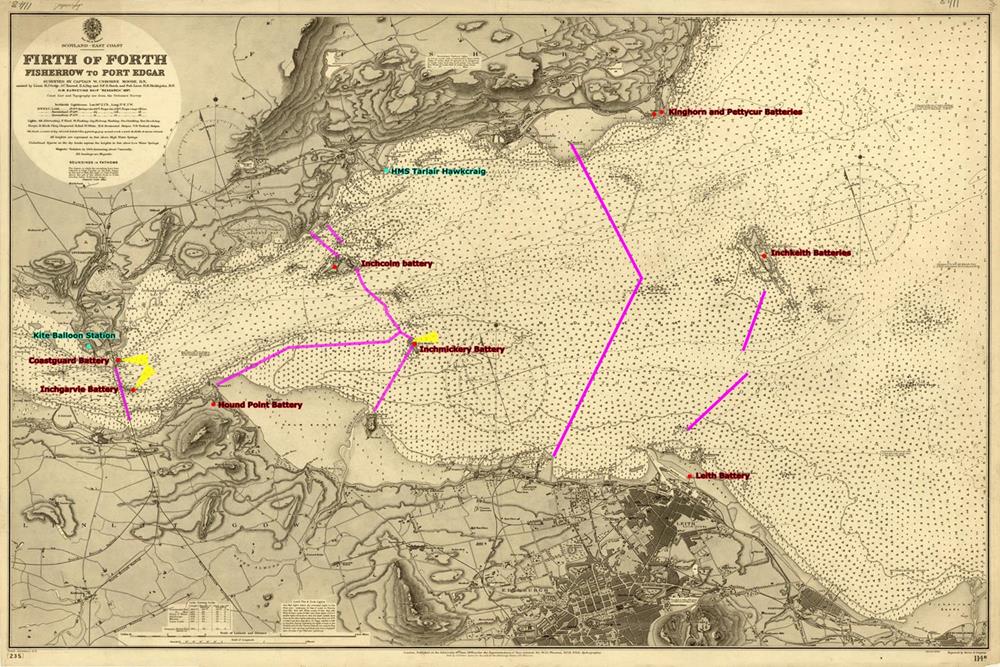
Boyd Williamson, June 2018.